E-bikes: Hill-flattening roadsters coming into their own
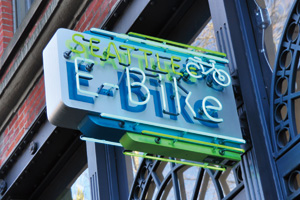
Story and Photos by Hilary Meyerson
Photo at right: Seattle E-Bike in Pioneer Square.
Quick—what’s the best-selling electric vehicle in the world? It’s not a car—it’s a bicycle. Welcome to the future.
E-bikes look like regular bikes, but have a battery pack for an extra assist. You still have to pedal, but you can commute to work without needing to take a shower. They are not a new concept, though early models were ugly and batteries had very short lives.
In recent years, with improved battery technology and lots of research and development, these hill-flattening roadsters are coming into their own.
While the vast majority of e-bikes, or electric assist bikes, are sold in Europe and Asia, many people feel that the North American market is about to tip. At last year’s Interbike show, exhibitors showing e-bikes more than doubled.
Nowhere might this trend be more evident than in the Northwest. Portland is probably the hub of e-bike life, while Seattle isn’t far behind. In fact, it’s Seattle’s unique hilly topography that makes it perfect for an e-bike, according to Brian Nordwall, owner of Seattle E-Bike in Pioneer Square.
Nordwall explains that you can’t build a road now more than eight degrees in slope. Madison, near Nordwall’s store, is a 12-degree slope. Virginia Street, from Pike Place Market, is 17 degrees. (At 20 degrees, city planners have to go with stairs, like a few locations in Queen Anne, Capitol Hill or West Seattle).
Electric bikes make these a breeze without breaking a sweat, which makes the bike a truly feasible transportation option for those who might not otherwise climb those hills, or don’t want to grind out that exercise in their work clothes.
“Even if you’re a 60-year-old man in mediocre shape, like me, you can do it,” says Nordwall. “It’s the hill flattener.”
Nordwall is particularly fond of the electric fat bikes, the electric version of the balloon-tired mountain bikes taking snowy and sandy destinations by storm.
“They are fantastic urban warriors. The one we’re making for the police will go up the Harbor Steps. Easily.”
Portland study
As is often the case, Portland is a pioneer in bicycle progress—this time with e-bikes. John MacArthur, Sustainable
Transportation Manager for Oregon Transportation Research and Education Consortium (OTREC) at Portland State University is leading a study to see how e-bikes can be integrated into a sustainable transportation system. The study is partially funded by a grant from Drive Oregon.
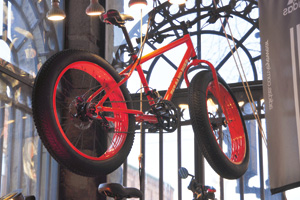 The study will take 30 e-bikes and give them out to four different groups of users: folks who don’t participate in biking, for real or perceived barriers; women, over 55 years old; people who commute more than five miles a day, where they feel topography is too challenging; and to those might have some kind of physical impairment, like a bad knee Downtown areas that have scarce and expensive parking and transportation costs are key markets for e-bikes.
The study will take 30 e-bikes and give them out to four different groups of users: folks who don’t participate in biking, for real or perceived barriers; women, over 55 years old; people who commute more than five miles a day, where they feel topography is too challenging; and to those might have some kind of physical impairment, like a bad knee Downtown areas that have scarce and expensive parking and transportation costs are key markets for e-bikes.
“Our main interest was getting feedback from that demographic of folks, and does it work?” asks MacArthur. “Does it expand our mobility options for folks? We’d like to encourage people to do more active transportation. Does the electric bike help these transportation goals? This is really exploratory testing.”
A local company, Conscious Commuter, will be donating the bike and using the study for market research.
Does MacArthur have predictions? Not yet, but he’s seeing more being used around town each day.
“I think there is a huge opportunity in the market,” he says.
Surprise market
 While many thought that the e-bikes would be appealing to those who are already cycling, there has been a surprising advent of several niche markets. E-bikes come in so many varieties, from fat bike to folding bike, and the folding variety has proven very popular with boaters and small plane owners. It’s a great mode of transportation for those who have limited space.
While many thought that the e-bikes would be appealing to those who are already cycling, there has been a surprising advent of several niche markets. E-bikes come in so many varieties, from fat bike to folding bike, and the folding variety has proven very popular with boaters and small plane owners. It’s a great mode of transportation for those who have limited space.
Imagine this: you pull your boat up to a small marina but want to head into the bigger town nearby for supplies. Unfold your e-bike and zip away. Or if you’ve landed your small plane on a remote island airfield and you’d like to spend the day touring the quaint towns or scenery that’s farther than walking distance. An e-bike opens up possibilities for many travelers.
The wave of the future?
Only time will tell if e-bikes have finally reached the tipping point here in the Northwest. There are still purists who feel they are not real bikes if they are not being powered by 100 percent pedal action. However, still others feel that anything that gets more people pedaling, is a good thing. There are no points awarded for driving your car up one of Seattle’s steep hills; pedaling at all is a step in the right direction for your health and for the environment.
Regardless of your predisposition, e-bikes are worth another look. They aren’t going away, and you might be the next rider zipping by other riders without even breaking a sweat.
Hilary Meyerson is the editor of NW Cyclist and Outdoors NW and could use some help on the hills.
Editor’s Note: Many thanks to the Electric Bike Report, a great website and resource for electric bike information.
If you like this post, you might also enjoy:
Trackbacks For This Post
2 Comments
-
[...] [...]
-
Very efficiently written post. It will be valuable to anyone who utilizes it, as well as myself. Keep up the good work – for sure i will check out more posts.

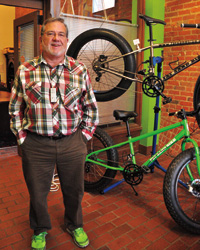
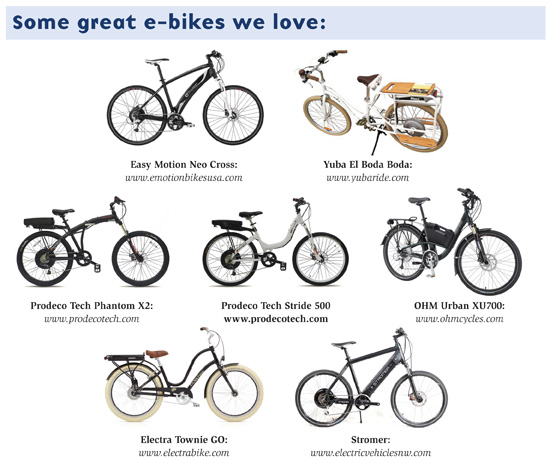


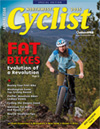
[...] [...]